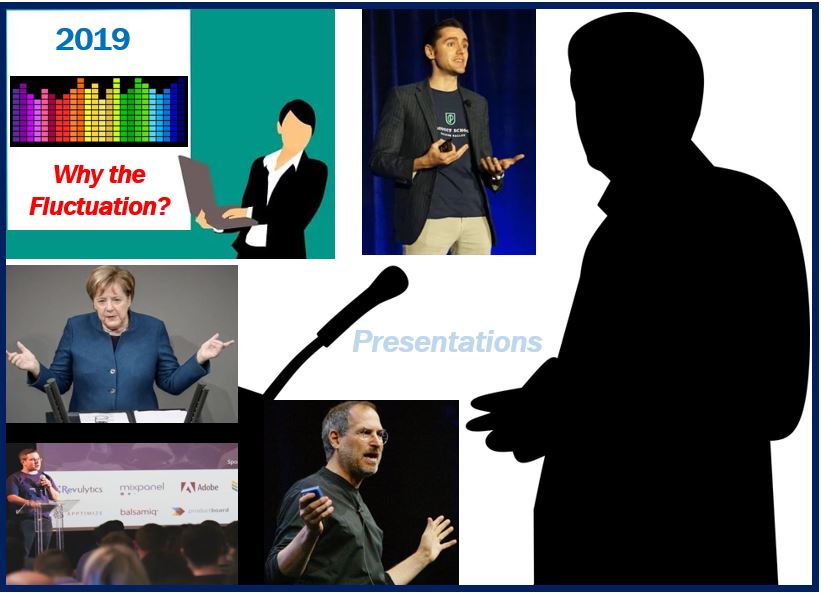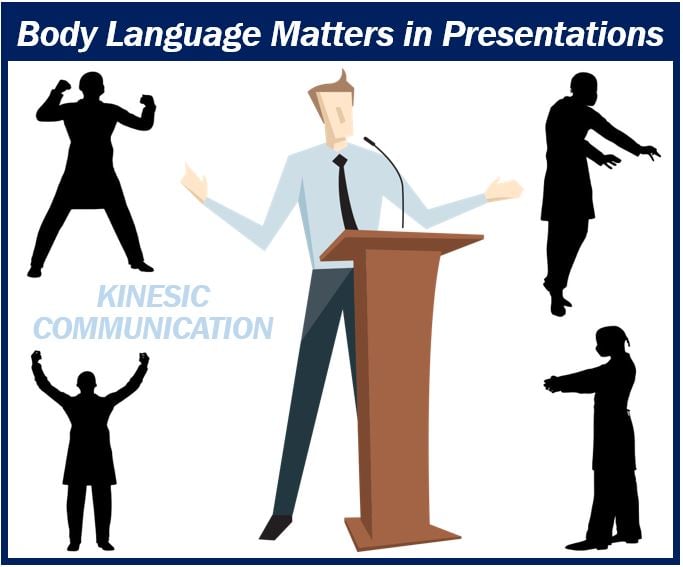A presentation involves talking in front of a group of people to explain an idea, system, process, recent performance, forecast, or other topic. The person who does the explaining is the presenter and may use visual aids to help convey his or her message more effectively.
 In a presentation, somebody presents a topic to a group of people, i.e., an audience. The presenter’s aim may be to suggest, sell, inform, inspire, motivate, persuade, convince, or build goodwill.
In a presentation, somebody presents a topic to a group of people, i.e., an audience. The presenter’s aim may be to suggest, sell, inform, inspire, motivate, persuade, convince, or build goodwill.
Moscow State Technical University has the following definition of the term:
“A presentation is a formal talk to one or more persons that “presents” ideas or information in a clear, structured way. All presentations have a common objective: they are given in order to inform, train, persuade or sell”
An event with prizes or awards
The term may also refer to an event in which qualifications, prizes, or awards are formally given to people who have achieved or won them. Somebody in an office might say, for example: “Harold is retiring next week. There will be a small presentation tomorrow.”
This means that Harold’s colleagues and bosses will be there to celebrate his retirement, thank him for his good work, and possibly give him a goodbye present. Typically, in this kind of event, there are drinks and food.
Presentation of a product
In the retail business, the term refers to how a product is presented to customers, consumers, and prospects. A prospect is somebody who might well turn into a paying customer.
For example, in supermarkets, donuts and croissants are typically presented in attractive boxes to make them more desirable and enticing. Marketing and merchandising professionals often say: “When selling something, presentation is everything.”
If you are selling your home, you need to make it as attractive as possible for possible buyers. Perhaps you will paint the walls, get a gardener, and maybe redecorate the hall. A good presentation can help speed up the sale.
This article focuses on the meaning of the term when it refers to presenting information to an audience.
An effective presentation
To be effective, presenters must make the best use of their relationship with their audience. It is crucial to know the audience members well, including their needs, if you want to capture their interest and develop their understanding and cooperation.
The University of Leicester says the following about effective presenters:
“An effective presentation makes the best use of the relationship between the presenter and the audience. It takes full consideration of the audience’s needs in order to capture their interest, develop their understanding, inspire their confidence and achieve the presenter’s objectives.”

Here are some suggestions that will help you deliver effective presentations:
Passion
If you are passionate about your topic, your audience will notice and are much more likely to feel a connection with you.
The world’s best presenters all say that it is crucial to connect with members of the audience. The best way to do this is with passion.
What are their needs?
People have come to watch and listen to you to satisfy their needs, rather than to find out how much you know. Before you even start preparing your presentation, you must find out what their needs are.
SKILLSYOUNEED says the following regarding what you know and your audience’s needs:
“As you prepare the presentation, you always need to bear in mind what the audience needs and wants to know, not what you can tell them.”
Preparation
The best presenters in the world make sure they have prepared thoroughly for each event. Just like a good play requires rehearsals, so does presenting information or ideas to a group of people.
If you can, practice on somebody or a small group of people. Perhaps the only volunteers you can find are members of your household. That’s fine; practice on them and ask for feedback.
If you talk too fast or keep scratching your head, you will probably not be aware, but other people will. It is best to find that out beforehand.
Other tips
There are literally dozens of other components of a good presentation, such as:
- Having a strong opening.
- Editing your script ruthlessly.
- Using visual aids appropriately.
- Being yourself.
- Creating a structure that is easy to follow.
- Making eye contact.
- Distributing your eye contact equally.
- Keeping it simple.
- Projecting your voice effectively.
- Body language.
- Breathing properly.
Above all, make sure you enjoy it. If you don’t, your audience will soon realize, which is the kiss of death as far as presentations are concerned.
If you are ambitious regarding your career, eventually you will have to present to audiences. C-level executives, for example, have to do it all the time. A C-level executive is a top corporate officer in a business, such as a CEO, CIO, CFO, i.e., an executive whose job title begins with the letter ‘C’.
